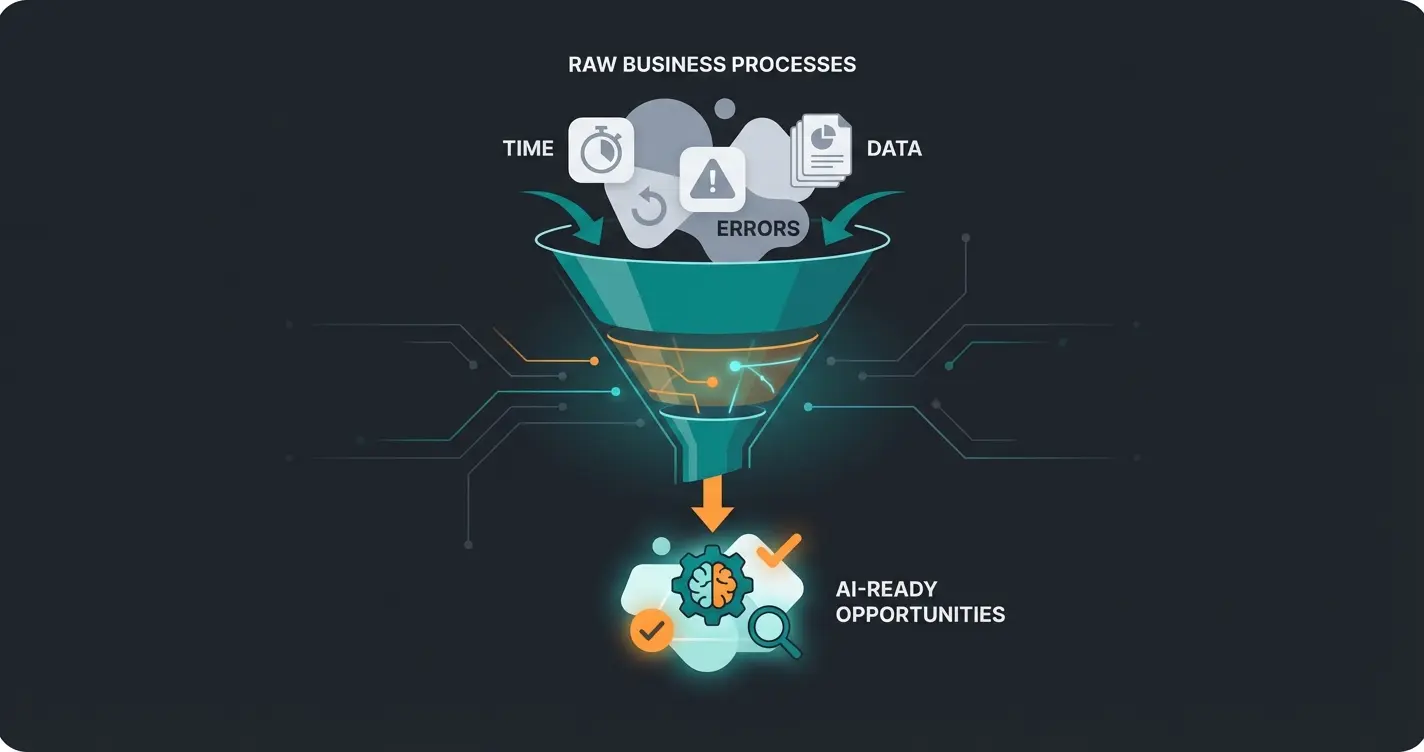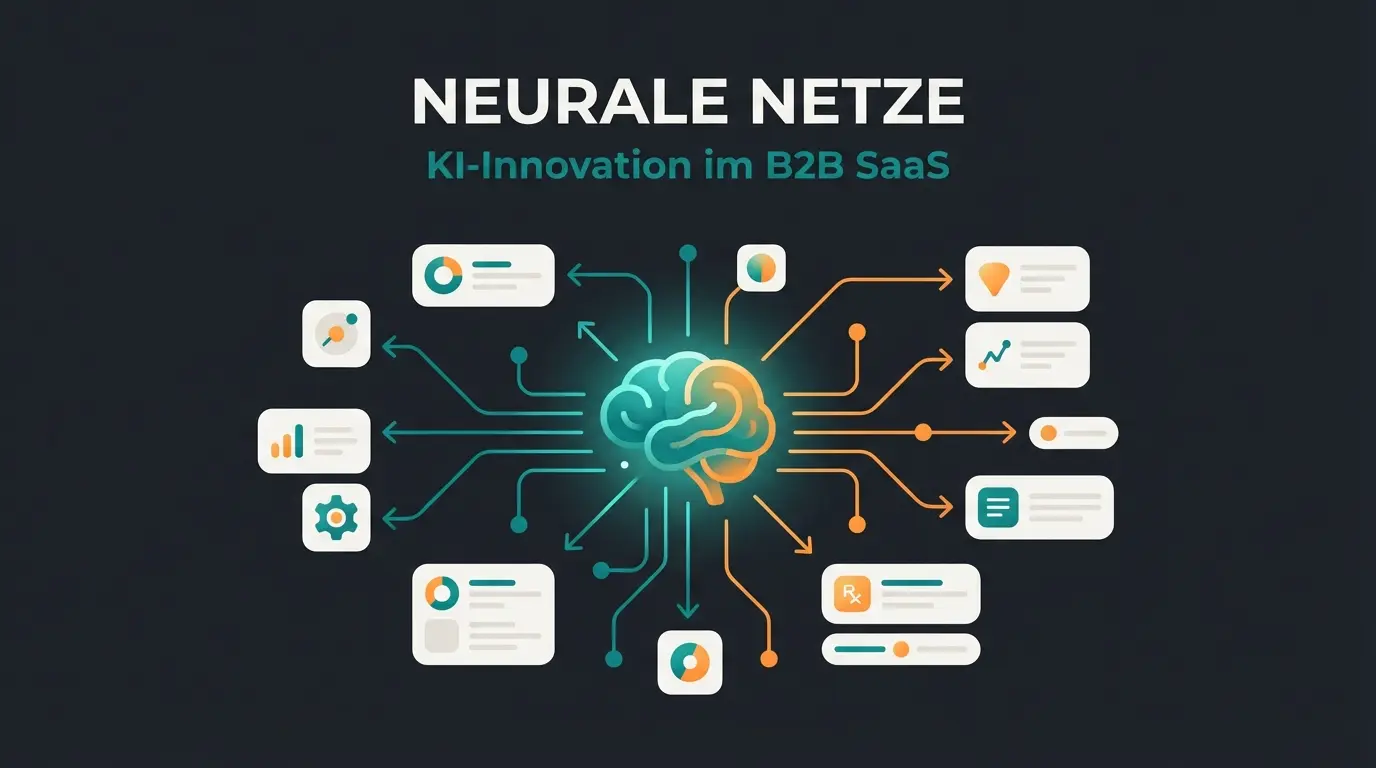Introduction
The implementation of artificial intelligence is no longer optional for companies. According to current statistics on AI usage in Germany, 12% of German companies are already using AI systems. Large enterprises are leading the way with 35%, while small and medium-sized enterprises (SMEs) still have catching up to do with adoption rates between 10-16%.
The practical benefits of AI systems are evident in many areas: Automated customer advice reduces waiting times and increases customer satisfaction. Intelligent process optimization saves up to 30% of operating costs. Predictive Maintenance extends the service life of machines by an average of 20%.
The current AI transformation study confirms: 73% of companies see AI as a central opportunity for the future. The key to success lies in a structured approach. With our 7-step plan, you can master AI implementation systematically and sustainably.
Step 1: Understand AI Fundamentals
Key AI Terms for Practice
Machine Learning forms the basis of modern AI systems. Here, algorithms learn from data and continuously improve their performance. Deep Learning goes a step further and uses artificial neural networks for complex tasks such as image recognition or text processing.
Natural Language Processing (NLP) enables the processing of human language. This technology drives applications such as AI-supported product advice and automated customer support.
AI Applications in Everyday Business
AI potentials are diverse: Chatbots optimize customer service, Predictive Analytics improves forecasts, and Computer Vision automates quality controls. Process automation through AI increases efficiency in administration and production.
Step 2: Identify Opportunities & Analyze Processes
Systematic analysis of business processes forms the basis for successful AI implementation. The right methodology for process analysis makes it possible to identify the most promising areas for AI application.
Conduct Structured Process Analysis
A thorough process analysis begins with the documentation of all workflows. The focus is on repetitive activities and data-intensive processes. A proven approach is AI-supported customer service, which quickly shows measurable success.
The process analysis should consider the following aspects:
- Time Expenditure: How many working hours are currently required for the process?
- Error Rate: How frequently do errors occur in the manual process?
- Data Quality: Is the required data available in a structured form?
- Complexity: How many decision steps does the process involve?
- Standardization: Can the process be captured in clear rules?

Evaluate Automation Potentials
After the analysis, processes must be prioritized according to their automation potential. The evaluation is based on measurable criteria such as savings potential, technical feasibility, and expected implementation effort.
Particularly suitable processes are those with:
- High manual effort combined with clear rules
- Large amounts of data that need to be evaluated
- Recurring decision patterns
- Measurable quality criteria
ROI Calculation for AI Projects
The profitability of an AI project can be determined using concrete key figures. The ROI calculation considers direct cost savings such as reduced personnel costs and indirect benefits such as improved quality or higher customer satisfaction.
Initial setup costs
Workshops & education
Ongoing updates & cloud costs
Step 3: Plan Your AI Strategy
A well-thought-out AI strategy is the key to success. According to current studies, AI projects often fail due to a lack of strategic alignment.
Define Measurable AI Goals
The goals of AI implementation must be concrete and measurable. A practical template for defining goals follows the SMART principle:
- Specific: Precise definition of the desired result
- Measurable: Definition of concrete KPIs
- Achievable: Realistic with available resources
- Relevant: Adds value to the company
- Time-bound: Clear timeframe
Create a Timeline with Milestones
A realistic schedule considers all phases of AI implementation. The most important milestones are:
2-3 Months: Process audit and strategy definition
3-6 Months: Setup, integration, and development
2-3 Months: Pilot phase and refinement
3-4 Months: Rollout and scaling
Budget and Resource Planning
Resource planning includes both financial means and personnel capacities. A realistic budget considers technical infrastructure, licenses/software, external consulting, internal personnel costs, training budgets, and a reserve for unforeseen expenses. Careful planning prevents bottlenecks during implementation and ensures long-term success.
Download our comprehensive AI readiness checklist and start planning your transformation today.
Get the ChecklistStep 4: Launch Pilot Projects
The practical implementation of AI projects begins with the selection of suitable pilot projects. These first steps are particularly important for the long-term success of AI integration in the company.
Select the Right Pilot Projects
When selecting AI pilot projects, you should focus on three central criteria:
1. Manageable Complexity: Choose processes that are clearly defined and well-documented. AI-supported customer service is ideally suited as a starting point because the tasks are clearly outlined.
2. Measurable Benefit: Project goals must be measurable through KPIs such as time savings, cost savings, or quality improvement. For example, when introducing AI in email classification, the improvement in processing time can be directly measured.
3. Quick Feasibility: The project should be realizable within 3-6 months. Longer project durations increase risk and delay important learning effects.
A Real-World Case Study
A medium-sized manufacturing company started with AI-supported quality control. The initial situation: 4 employees visually checked 1,000 components daily for defects. The AI solution was introduced parallel to the existing process.
After 8 weeks, the system reached a recognition rate of 98%—higher than manual inspection. The employees took on new tasks in process optimization. The investment paid for itself after 9 months.
Avoid Typical Pitfalls
The most common mistakes in AI pilot projects arise from lack of data basis (ensure high-quality training data is available), missing success criteria (define clear goals before starting), and excessive expectations (AI systems need time to learn).
Strategic Deep Dive: Consultative AI vs. FAQ Bots
One of the critical mistakes companies make in Step 4 is choosing the wrong type of AI. Many businesses implement simple 'FAQ Bots' that only match keywords. While cheap, they often frustrate customers. The real value lies in Consultative AI—systems that understand context and guide users to solutions.
| Feature | Standard FAQ Bot | Consultative AI |
|---|---|---|
| Technology | Keyword Matching | Semantic Understanding (NLP) |
| Goal | Deflect Support Tickets | Drive Sales & Solve Problems |
| Data Source | Manual FAQ Lists | Product Manuals & Tech Specs |
| User Experience | Often Frustrating / Static | Advisory / Context-Aware |
For complex products (like machinery, insurance, or electronics), an AI that 'understands' technical documents is far superior to a bot that simply recites pre-written answers. This shift from 'deflection' to 'consultation' is where the massive ROI improvement happens.
Step 5: Build High-Performance Teams
A successful AI team combines technical expertise with industry knowledge. The right composition is crucial for the successful implementation of the AI strategy.
Make-or-Buy: Choosing the Right Strategy
The decision between internal development and external support depends on various factors. An analysis of AI Employee Integration shows the pros and cons:
Internal Development offers full control and independence but requires high investments in personnel and infrastructure.
External Partners bring experience and accelerate implementation but create dependencies and can cause higher ongoing costs.
A hybrid strategy often combines the advantages of both approaches: External partners support the launch while internal know-how is built up in parallel.
Roles for AI Experts
- AI Architect: Develops the technical vision and selects suitable AI models.
- Data Scientist: Analyzes data and optimizes AI algorithms.
- AI Trainer: Supervises model training and quality assurance.
- Business Translator: Translates between specialist departments and the AI team.
Step 6: Integrate & Motivate Employees
The integration of AI systems requires a well-thought-out communication strategy. A structured communication plan helps to reduce fears and create enthusiasm for new possibilities. It is important to transparently inform about goals, schedules, and impacts.

Successful Communication of AI Introduction
The best way to increase acceptance is through early information and active involvement of employees. Regular updates on project progress and concrete success stories help to break down reservations. Particularly effective are:
- Workshops: Practical training on handling AI tools
- Mentoring: Experienced employees support as AI mentors
- Feedback: Regular employee surveys on AI usage
- Success Stories: Making positive results through AI visible
An open error culture when learning with AI systems is crucial. The integration of AI employees succeeds better if employees can experiment without fear of negative consequences.
Step 7: Scale and Optimize
After successful pilot projects, the goal is to systematically expand AI usage within the company. A structured approach with clear success criteria is essential here.
Measuring AI Success
The most important KPIs for measuring the success of AI projects include:
- Efficiency: Time savings and cost reduction through automation
- Quality: Error reduction and improvement of results
- Usage: Active users and usage intensity of AI tools
- Satisfaction: Feedback from employees and customers
Regular monitoring of these figures enables continuous improvements. Insights from successfully scaled AI projects flow directly into new implementations.
Continuous Improvement
The use of AI is a dynamic process requiring constant optimization. Best practices for continuous improvement include automated monitoring of AI systems, gathering regular user feedback, continuous retraining of AI models, and adapting processes based on data analysis.
Successful scaling depends on a balance of technical expertise and organizational change. The use of AI in customer service exemplifies how systematic expansion can generate sustainable value.
Conclusion
The implementation of AI is a journey, not a destination. By following this 7-step guide—from understanding the basics to scaling complex consultative AI—you position your company for long-term growth. Don't wait for a perfect 'Big Data' strategy; start with high-impact pilot projects that solve real problems today.
The biggest challenges are usually data quality and employee acceptance. Technically, tools are available, but if the data is unstructured or the team resists the change, the project will struggle.
A well-scoped pilot project should take between 3 to 6 months. Anything longer risks losing momentum; anything shorter may not provide enough data for a valid evaluation.
Not necessarily. For many 'Consultative AI' applications, modern platforms allow you to implement powerful tools using your existing documentation without needing to build models from scratch.
Yes, modern enterprise AI solutions are designed with GDPR in mind. However, it is critical to involve your data privacy officer early in the process to ensure all data handling meets legal standards.
Stop using dumb FAQ bots. Implement an AI that truly understands your products and advises your customers.
Start Free Trial
